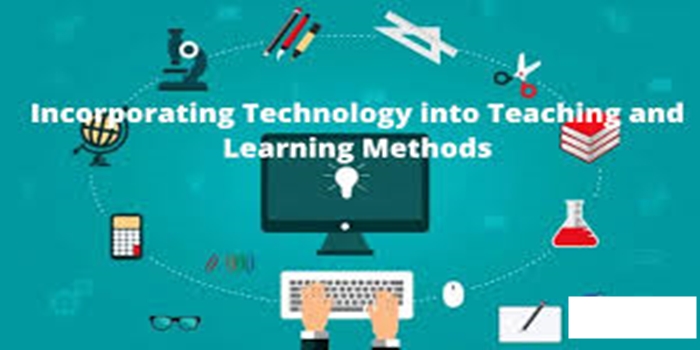In this article, we discussed the meaning of incorporate technology, the benefits, the examples, the types, we talked about the effect.
Definition
Incorporated Technology means any technology (including software and source code) included in the Optimized Code that is owned by E-world or its licensors, including all Intellectual Property Rights in such technology.
“Incorporate technology” means to use technology to enhance or support a process, system, or environment.
In the workplace
Using digital tools to organize tasks, share files, and communicate with coworkers
Using software to automate repetitive tasks so that employees can focus on more important work
Using technology to make businesses more competitive and achieve goals faster
In education
Using technology to enhance the student learning experience
Using technology to create opportunities for students to complete assignments on computers
Using technology to create pathways for differentiated instruction
Using technology to enrich educational content and foster engagement, collaboration, and critical thinking.
Incorporating technology can have many benefits, including
Improved communication
Increased efficiency
Better access to information.
In education
Skill development
Technology helps students develop critical thinking, research, collaboration, and problem-solving skills
Personalized learning
Students can access multimedia resources like videos, eBooks, and interactive programs to supplement their in-class learning
Independent study
Technology provides opportunities for independent study and continued skill development
In business
Efficiency
Technology helps businesses streamline processes, track data, and manage contacts
Cost savings
Technology helps businesses reduce costs by automating repetitive tasks and making operations more efficient
Improved communication
Technology helps businesses improve communication and collaboration between staff
Better decision-making
Technology helps businesses make better decisions by providing access to data and analytics
In society
Access to information: Technology provides better access to information
Productivity: Technology can increase productivity and time-saving.
Examples of incorporating technology in education include:
Digital learning content: Using online resources like e-books and online libraries to provide access to a wide range of reading materials
Virtual teachers: Using digital technologies to provide virtual teachers, which can help with teacher shortages
Multimedia presentations: Using text, images, videos, and audio to explain complex concepts
Online learning: Using online learning and blended classrooms
Project-based activities: Using technology in project-based activities
Game-based learning: Using games for learning and assessment
Learning with mobile devices: Using mobile and handheld devices for learning
Instructional tools: Using interactive whiteboards and student response systems
Virtual reality applications: Using virtual reality applications to revolutionize traditional teaching methods
Adaptive learning platforms: Using adaptive learning platforms to revolutionize traditional teaching methods
Augmented reality: Using augmented reality to assist in the communication of knowledge.
There are many types of technology, including
Computers
The foundation of digital technology, computers come in many forms, including laptops, personal computers, and supercomputers.
Software
A set of instructions and code that tells a computer how to function. Software is used to make tasks more efficient, automate processes, and improve user experience.
Artificial intelligence (AI)
A fast-growing type of information technology that’s used in many industries, including gaming, communications, and computing.
Cloud computing
The delivery of computing services and resources over the internet on a pay-per-use basis.
Technology in education
Technology can be integrated into the classroom to support and enhance the learning environment. This can include:
Project-based activities that incorporate technology
Game-based learning and assessment
Learning with mobile and handheld devices
Instructional tools like interactive whiteboards and student response systems.
Effects of incorporating technology:
Enhanced Learning Outcomes:
In education, technology can provide interactive tools, personalized learning paths, and access to a vast range of digital resources, leading to deeper understanding and improved student engagement.
Improved Communication:
Technology facilitates unified communication across earthly boundaries through email, video conferencing, and messaging platforms, development collaboration and global connectivity.
Increased Productivity:
Automating dull tasks and utilizing data analysis tools can streamline workflows, increasing productivity in various industries.
Accessibility to Information:
The internet provides immediate access to a vast amount of information, enabling individuals to learn and research more effectively.
Innovation and Creativity:
Technology enables the development of new tools and solutions, fostering creativity and innovation across different sectors.
Personalized Experiences:
Adaptive technologies can tailor content and learning experiences to individual needs and preferences.
Potential negative effects of technology integration:
Digital Divide:
Unequal access to technology can exacerbate existing social disparities, leaving certain populations behind.
Overreliance on Technology:
Excessive dependence on technology can lead to reduced critical thinking skills and a lack of basic problem-solving abilities.
Privacy Concerns:
Sharing personal data online can raise privacy issues and potential security risks.
Distraction and Addiction:
Excessive screen time can lead to commotions and potential addiction issues.
Conclusion
Incorporate technology” means to actively participate various technological tools and methods into an existing process, system, or environment, aiming to enhance competence, productivity, and functionality by leveraging the competences of modern technology.
READ: Educational Technology


